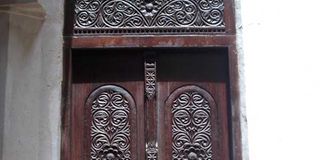Lamu celebrates historic sites

Lamu town during 2014 Cultural Festival. PHOTO/CLARA WANJIKU
What you need to know:
- Lamu’s surviving historic architectures fuses African, Arabic, Indian and Persian styles
- The closing ceremony will also witness the launching of Lamu Dhow that will embark on a voyage to the United States
Lamu residents will this week join the rest of the world in celebrating the World Monuments Watch Day.
The celebrations will start on the International Day for Monuments and Sites April 18 and will continue to April 20.
Lamu’s surviving historic architectures fuses African, Arabic, Indian and Persian styles reflecting its past role as an important trading center.
An anticipated increase in tourism puts the historic structures of the old town at risk from uncontrolled development, a threat that led to the inclusion of the town on the 2014 World Monuments Watch.
“We are fortunate in Lamu to have the highest concentration of heritage sites and monuments and being renowned as a UNESCO world heritage site,” Lamu county executive for Trade, Tourism and Culture Samia Omar said.
Ms Omar said they have organised cultural and educational activities to promote community awareness and outreach as well as tourism. The activities will also include a lecture, film screening and a community treasure hunt.
The closing ceremony will witness the launching of Lamu Dhow that will embark on a voyage to the United States to represent Lamu in the Smithsonian Festival 2014.
The biennial World Monuments Watch was launched in 1966 to call international attention to cultural heritage threatened by forces of nature and the impact of social, political and economic change.
For many historic sites, inclusion in the watch provides an opportunity to raise awareness, foster local participation in preservation, leverage resources for conservation, advance innovation and collaboration and demonstrate effective solutions.
Since its inception, the Watch has provided support for more than 600 sites.
Events are supported in part by the World Monuments Fund and local partners who include Lamu county government, National Museums of Kenya, Save Lamu, Kenya Red Cross, Lamu Cultural Promotion Group, Lamu Tour Guides Association and members of the Lamu Tourism Association.





